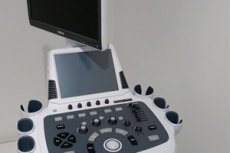Additional methods of examining the patient
Last reviewed: 23.04.2024

All iLive content is medically reviewed or fact checked to ensure as much factual accuracy as possible.
We have strict sourcing guidelines and only link to reputable media sites, academic research institutions and, whenever possible, medically peer reviewed studies. Note that the numbers in parentheses ([1], [2], etc.) are clickable links to these studies.
If you feel that any of our content is inaccurate, out-of-date, or otherwise questionable, please select it and press Ctrl + Enter.

To date, medicine has been enriched with a large number of additional research methods, the significance and dissemination of which are gradually changing.
Laboratory methods. A general blood test and urinalysis remain of primary importance. Morphological examination of blood (primarily leukocytes) is crucial in the recognition of tumor processes - leukemia. No less important is the quantitative determination of erythrocytes ( anemia ), leukocytes (the severity of the inflammatory reaction), measurement of erythrocyte sedimentation rate ( ESR ).
Numerous studies of plasma and blood serum are carried out: biochemical, immunological, serological, and others. Some of them may have a crucial, key, value in diagnosis. These data reflect, in combination with other, primarily clinical manifestations, the course of pathological processes, a decrease or increase in their activity. It is possible to single out a complex of shifts that indicate changes in protein fractions of blood in the active inflammatory and immune processes. An increase in the blood levels of alanine and aspartic transaminases is observed with necrosis (necrosis) of myocardial tissue ( infarction ), liver (hepatitis). Evaluation of protein content, glucose in urine, quantitative study of cellular elements in urine sediment are of great diagnostic value.
The study of feces, spinal, pleural fluids retains its importance in diagnosis . In this case, it is necessary to specify the importance of bacteriological study of all these media, which often allows us to identify the etiological factor of the disease - the corresponding microorganism. Less importance now has a study of gastric juice and duodenal contents.
Instrumental methods. X-ray examination of various organs remains important in the diagnosis of heart, lung, gastrointestinal, gallbladder, kidney, brain, bone diseases. Its accuracy, reliability of data significantly increased with the use of so-called contrasting (barium suspension introduced into the gastrointestinal tract, and a contrast containing iodine introduced into the vascular bed).
The study of the electrical activity of certain organs, primarily the heart (electrocardiography), is of great importance. It allows to reveal changes in the rhythm of the heart and pathology associated with morphological changes (hypertrophy of the heart, myocardial infarction ). Endoscopic research has become particularly important. Flexible endoscopes make it possible to get good image quality and thanks to the computer you can carefully consider the internal surface of the gastrointestinal tract, bronchi, urinary tract. An important and sometimes decisive addition to this study is tissue biopsy followed by a morphological study that allows one to evaluate, for example, the malignancy of a process or features of inflammation. Material for morphological study can also be obtained with needle biopsy of the liver, kidneys, myocardium.
Ultrasound examination (echolocation) has gained wide popularity in recent years. Ultrasonic pulses, reflected from the boundaries of sites with different densities, provide information on the size, structure of organs. Especially important is the ultrasound (ultrasound) of the heart, and it is also possible to study its contractile function. Also, ultrasound of the abdominal cavity, liver, gallbladder, kidneys is significant . With the use of computers the resolving power of ultrasound, the quality of the images obtained has improved significantly. Very important advantage of ultrasound is its safety, non-invasiveness, which distinguishes it from angiography, biopsy of the liver, kidneys, myocardium.
Computer tomography made it possible to obtain high-quality images of dense organs and acquired an important role in diagnosis. Radioisotope research is widely used in the study of the cardiovascular system, kidneys, liver, bones, thyroid gland. The body enters a substance that accumulates in the appropriate organ and contains a radioactive isotope, the radiation of which is subsequently recorded. In this case, morphological and functional deviations can be detected in the corresponding organ. Diagnostic studies are very diverse. Many of them are invasive, which raises the issue of survey safety. In any case, the risk of ongoing research should not exceed the significance of data that can be obtained.
Thus, in the diagnosis of human disease, the most important place belongs to a clinical examination based primarily on classical methods. Although with the help of a number of additional and special research methods (laboratory, radiologic and radiopaque, ultrasound, etc.), it is possible to clarify the features of changes in one or another organ, more accurately determine their localization (the place of stenosis of the coronary artery of the heart with coronary angiography, etc.) and even to establish morphogenetic changes (different methods of studying tissue obtained from organ biopsy), yet the final diagnosis is the result of a careful and complex comparison of all the results.


 [
[